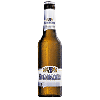Kulmbacher Brauerei - Pilsner
-
ABV:
5.00% -
Serving Temperature:
48° F -
Suggested Glassware:
Pilsner Glass or Flute Glass
Since its inception as a style of beer in 1842, Pilsner has become the single most popular style of beer the world has ever known. Golden in color, it originated in the Czech Republic town of Pilsen. Up until that time, all beer was dark and cloudy. The Czech pilsner was the first beer to be brewed clear and golden. The Germans quickly proved to be the most passionate devotees of the new style and the German contribution was to make the beer a bit lighter in body—better suited to everyday drinking—and to add an extra dose of hops for a refreshingly bitter zing.
Expect a massive, brilliant white head to top this lucent gold, well-carbonated beer. Look for a characteristic pilsner maltiness with notes of floral and spicy hops. We found it to be remarkably refreshing, easy-drinking, with a crisp, clean, dry finish and slightly bitter hop-driven aftertaste. A very food-friendly beer that will partner nicely with anything from light fish to Chicken Kiev to pizza to spicy Thai cuisine.
Expect a massive, brilliant white head to top this lucent gold, well-carbonated beer. Look for a characteristic pilsner maltiness with notes of floral and spicy hops. We found it to be remarkably refreshing, easy-drinking, with a crisp, clean, dry finish and slightly bitter hop-driven aftertaste. A very food-friendly beer that will partner nicely with anything from light fish to Chicken Kiev to pizza to spicy Thai cuisine.
In an area of northern Bavaria, today known as Franconia, in a town called Kulmbach, remnants of beer bread were found in a vessel dating back to 3000 BC. Other archaeological evidence has shown that brewing was a firmly established activity in Kulmbach since at least the mid-14th century. Given this ancient history, the town of Kulmbach is frequently said to be the birthplace of Germany's beer industry; a sort of fountainhead from which the Bavarian brewing heritage flowed. Expectedly, the Kulmbacher Brewery, established 1846, makes some of the finest beers in all of Germany.
Beer is a celebrated way of life in Franconia. On the last weekend of every July for at least the past 125 years, Kulmbach has held a beer festival in the town square. The region is especially well known for its more potent brewings. Originally, these higher potency malty nectars were concocted to sustain long distance travel during export throughout Europe, relying on higher ABVs as a natural preservative. But interestingly, one of the strongest beer styles indigenous to this famed area was discovered, not designed, in a sort of post-brewing mishap. As the story goes, a wooden barrel of bock bier, a strong, locally brewed malty beer in the 6.5-7.5% ABV range, was inadvertently left in the brewery yard in the middle of winter. Severe snow storms ensued and the barrel was forgotten, out of sight and covered by snowfall until the tail end of the season. When it was discovered, the contents were partially frozen, and the barrel had split open. The brewers, being a curious lot, chipped away the ice to see what became of their brew, sampling what remained in the barrel. Much to their surprise, the residual beer was richer and more concentrated than the original, with an exceptionally clean taste. So what happened? Well, because water freezes before alcohol, a portion of the beer's water content was forced out of the brew, resulting in a concentration of alcohol and sugars relative to the remaining beer volume. This accidentally-discovered "technique" was refined, and today gives us one of the beers the region is famous for: Eisbock ('eis' meaning 'ice' in German).
In addition to producing eisbock, the Kulmbacher Brewery makes a range of over 20 other beers, including a crisp, flavorful pilsner which we've selected, along with their eisbock, to showcase the diversity of beer flavors produced by this brewery.
If you'd like more information about the Kulmbacher Brewery check out http://www.kulmbacher.de.

Unmatched Variety by style, brewery & country
Choose from Five different Beer Clubs offering unmatched variety by brewery,
country of origin, and beer style to suit your specific tastes.


